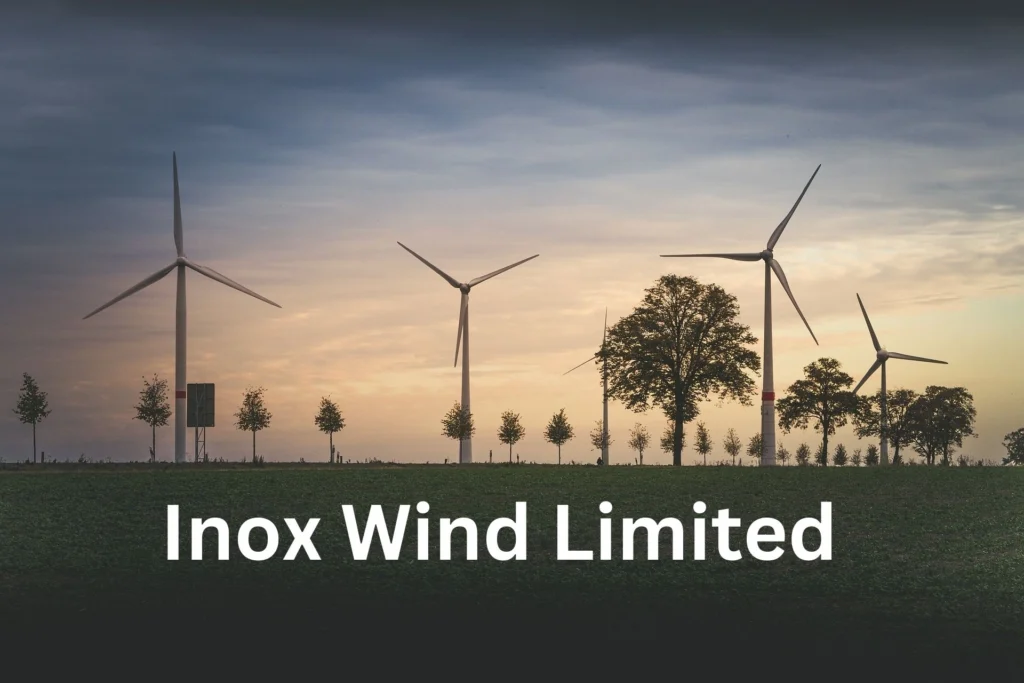Inox Wind Limited, a leading player in India’s renewable energy sector, has been making significant strides in the wind energy market. With a strong focus on innovation, operational efficiency, and strategic growth, the company has positioned itself as a key contributor to India’s renewable energy targets. In this article, we’ll dive into Inox Wind’s growth strategy, future outlook, challenges, and key advancements. We’ll also analyze whether the company is a good buy for investors looking to capitalize on the booming renewable energy sector.

Growth Strategy
Expansion in Manufacturing Capacity
The company is expanding its manufacturing capacity aggressively to cater to the increasing demand for wind turbines. The company is commissioning its nacelle manufacturing facility and making cranes and transformer manufacturing lines operational by Q4 FY ’25. This backward integration will not only decrease reliance on third-party suppliers but also enhance margins and operational efficiency.
Concentration on Hybrid Projects
With the renewable energy segment shifting towards hybrid projects (wind-solar hybrids), Inox Wind is positioned to gain from this trend. The company and its group company Inox Solar intend to bid for end-to-end hybrid contracts, providing differentiated solutions to clients. This will create additional revenue streams for its EPC (Engineering, Procurement, and Construction) and O&M (Operations and Maintenance) businesses.
Diversified Order Book
Inox Wind has a strong and diversified order book of 3.3 gigawatts (GW) consisting of both PSU and private company projects. Inox Wind is also actively engaging in government tenders and corporate orders, thus maintaining a continuous flow of new orders.
Technological Advancements
The company is also in the process of developing a 4-megawatt (MW) turbine, which should be commercially ready by the second half of FY ’26. The higher-capacity turbine will serve larger sites, especially in states such as Rajasthan and Gujarat, and should enhance profitability per megawatt.
Future Outlook
Strong Market Demand
India’s renewable energy space is experiencing unparalleled growth, backed by government policy and growing demand from the commercial and industrial (C&I) sector. Inox Wind is well placed to capture this growth, with a robust order book and execution strengths.
Revenue and Margin Growth
The company has forecasted an EBITDA margin of 17% for FY ’25, with future upgrades. With the operationalization of new manufacturing facilities and better execution, Inox Wind is expected to deliver higher margins and revenue growth in the future.
Synergies with Inox Solar
The move into solar manufacturing by the group through Inox Solar will provide Inox Wind with synergistic advantages. It will increase the competitive advantage of the company and provide new streams of revenue.
Challenges
Execution Delays
Similar to most infrastructure projects, Inox Wind is confronted with ground-level hurdles like land acquisition and grid connectivity. The company has so far dealt effectively with these hurdles, but any material delays could affect project timelines and revenue recognition.
Regulatory Hurdles
The renewable energy industry is tightly regulated, and government policy shifts or delays in approvals might create issues. The demerger of Inox Wind Energy Limited, for example, has been delayed because of procedural delays at the National Company Law Tribunal (NCLT).
Competition
The wind energy industry is highly competitive, with major players such as Suzlon and overseas players competing for market share. Although Inox Wind enjoys a strong market position, to sustain its competitive advantage, it needs to innovate constantly and optimize costs.
Key Advancements
Backward Integration
Inox Wind’s backward integration plan, i.e., to develop cranes and transformer assembly lines, is a big development. This would not only drive margins higher but also increase control over the value chain.
Better Credit Ratings
The firm’s short-term bank facility credit ratings have been elevated to the best possible ratings, a testament to its sound financial condition and better business prospects.
Emphasis on C&I Segment
Inox Wind is increasingly making efforts in the C&I segment, with growth of 3-4 GW per year. The sector provides better margins and quicker implementation than utility-sized projects.
Is Inox Wind a Good Buy?
Excellent Financial Performance
Inox Wind has reported an excellent financial performance in Q3 FY ’25, with a 96% YoY growth in revenue and a 192% YoY growth in EBITDA. The PAT of the company has also been at a record high, indicating high operational efficiency.
Strong Order Book
Having a diversified order book of 3.3 GW, Inox Wind is placed in a favorable position to expand over the coming two years. Both PSU and private sector orders focused by the company guarantee an even revenue flow.
Long-Term Growth Potential
India’s renewable energy market is anticipated to expand exponentially with government targets and rising demand for green energy. Inox Wind, with its solid market position and strategic efforts, is poised to ride this growth.
Valuation and Risks
Though the stock of the company has appreciated considerably, investors need to remain cautious about execution risks and regulatory issues. Nevertheless, for long-term investors, Inox Wind presents a good opportunity to invest in India’s renewable energy narrative.
Key Terms
EBITDA (Earnings Before Interest, Taxes, Depreciation, and Amortization): An indicator of a company's operating performance, showing profitability exclusive of non-operating expenses.
EPC (Engineering, Procurement, and Construction): A contractual arrangement in which a company takes up the design, procurement, and construction of a project.
O&M (Operations and Maintenance): Energy project operation and maintenance services designed to ensure peak performance.
C&I (Commercial and Industrial): Part of the energy sector that involves businesses and industries, which might need tailored energy solutions.
Nacelle: The housing of a wind turbine that holds the generator, gearbox, and other major components.
Hybrid Projects: Renewable power projects that incorporate two or more sources of power, like wind and solar, to provide power consistently.
